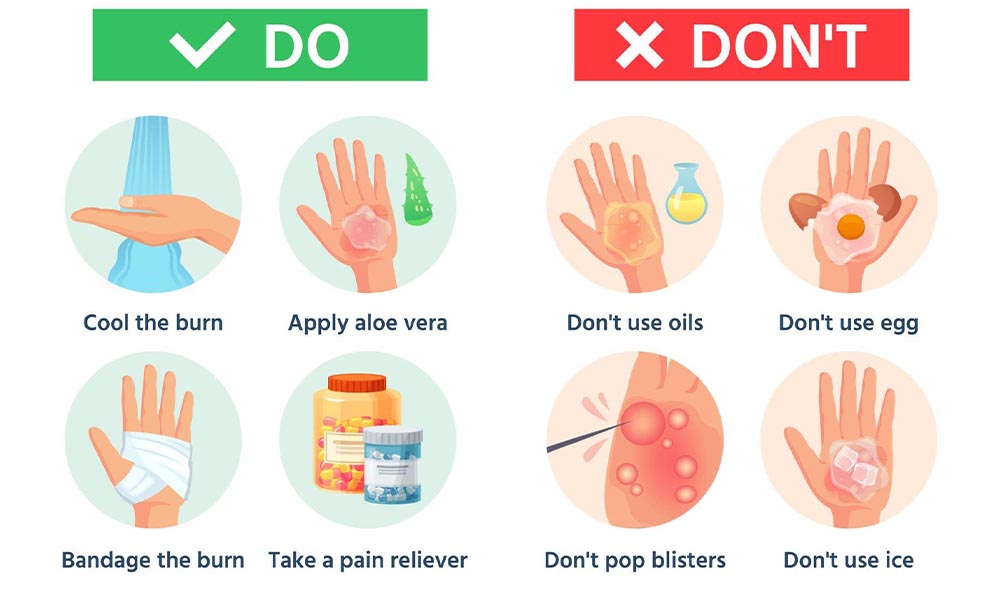When it comes to treating burns, there are many home remedies that have gained popularity. One such remedy is the use of toothpaste on burns. However, recent research suggests that putting toothpaste on burns may actually cause more harm than good. In this article, we will delve into the facts behind this trendy hack and explore why it may lead to irritation and other complications. Let’s separate fact from fiction and discover the proper ways to treat burns at home.
Table of Contents
ToggleUnderstanding Burns and Their Severity

Before we delve into the potential dangers of using toothpaste on burns, it’s important to understand the different types of burns and their severity. Burns can be categorized into three degrees:
- First-degree burns: These burns affect the outer layer of the skin and are characterized by redness, pain, and swelling. They are considered minor burns and can often be treated at home.
- Second-degree burns: These burns penetrate deeper into the skin and can cause blistering, intense pain, and swelling. They require more careful treatment and medical attention.
- Third-degree burns: These are the most severe burns that reach deeper layers of the skin, causing damage to tissues and potentially affecting nerves and blood vessels. Third-degree burns require immediate medical attention.
The Potential Dangers of Using Toothpaste on Burns
While using toothpaste on burns might seem like a quick and convenient remedy, it can actually exacerbate the problem and lead to irritation and other complications. Toothpaste contains ingredients like calcium and peppermint that can be harmful when applied to burns. These chemicals can increase the risk of infections and negatively impact the skin tissue, hindering the healing process.
Moreover, toothpaste is not designed to treat burns. Its primary function is to clean and protect teeth and gums. Applying toothpaste to burns can trap heat and moisture, creating an environment that is conducive to bacterial growth. This can further increase the risk of infection and delay the healing process.
Proper Home Remedies for Treating Burns

Instead of relying on toothpaste, it’s important to follow proper home remedies for treating burns. Here are some effective and safe alternatives:
1. Cool Water
The first step in treating a burn is to cool it down. Run cool (not cold) water over the affected area for at least 10 minutes. This will help to soothe the burn and remove any heat trapped within the skin.
2. Aloe Vera Gel
Aloe vera gel is known for its soothing properties and can provide relief for burns. Apply a generous amount of pure aloe vera gel to the burn and gently massage it into the skin. Aloe vera helps to reduce inflammation and promote healing.
3. Antibacterial Ointments
For minor burns with broken skin, applying an antibacterial ointment can help prevent infections. Look for ointments that contain ingredients like bacitracin or neomycin and apply a thin layer to the burn after it has been cooled.
4. Non-Stick Dressings
After applying any necessary ointments, cover the burn with a sterile, non-stick dressing. This will help protect the burn from further irritation and prevent infections.
5. Pain Relief
If you are experiencing pain from the burn, you can take over-the-counter pain relievers like ibuprofen or acetaminophen. However, always follow the recommended dosage and consult a healthcare professional if the pain persists or worsens.
When to Seek Medical Attention
While most minor burns can be treated at home, there are certain situations that require medical attention. You should seek immediate medical help if:
- The burn is larger than three inches in diameter
- The burn is on the face, hands, feet, genitals, or major joints
- The burn is deep and affects multiple layers of the skin
- The burn is caused by chemicals or electricity
- The burn shows signs of infection, such as increased redness, swelling, or pus
- The burn is accompanied by symptoms like fever, difficulty breathing, or dizziness
It’s always better to err on the side of caution and seek professional medical advice when in doubt.
Frequently Asked Questions
What is the concept behind using toothpaste on burns?
Using toothpaste on burns is a folk remedy that some people believe can alleviate pain and promote healing. It’s thought to cool and soothe the affected area.
Does toothpaste really help with burn relief?
While some anecdotal evidence suggests toothpaste can provide temporary relief, it is not recommended. In fact, it can often lead to further irritation and complications.
Why might toothpaste actually be harmful for burns?
Toothpaste contains various chemicals, including potentially irritating ones like menthol or fluoride. When applied to a burn, these ingredients can exacerbate pain and slow down the healing process.
What should I do instead of using toothpaste on burns?
It’s best to immediately rinse the burn with cool running water for at least 10 minutes. This helps to cool the skin and remove any residual chemicals or debris. Afterward, cover the burn with a clean, sterile dressing.
When should I seek medical attention for a burn?
Seek medical attention if the burn is severe (large or deep), covers a sensitive area (face, hands, genitals), or if it becomes infected. Also, consult a healthcare professional for chemical burns or burns caused by electrical or radiation sources.
Are there any over-the-counter products suitable for burns?
Over-the-counter burn ointments or gels specifically designed for burns are available. These products can provide pain relief and create a protective barrier over the wound.
How can I prevent burns in the first place?
To prevent burns, exercise caution around hot surfaces, open flames, and electrical appliances. Use protective gear when necessary, such as oven mitts or welding masks. Keep chemicals out of reach, especially around children.
Are there any natural remedies that can help with burn relief?
Aloe vera gel, when used correctly, can be a soothing natural remedy for minor burns. It has anti-inflammatory properties and can help with pain relief and healing.
What are the potential complications of using toothpaste on burns?
Using toothpaste on burns can lead to increased pain, delayed healing, and the risk of infection. It’s essential to avoid this practice to prevent these complications.
Where can I find more reliable information about burn treatment?
Consult a healthcare professional or refer to reputable medical sources and organizations for accurate and up-to-date information on burn treatment and first aid.
Conclusion
In conclusion, putting toothpaste on burns is not a recommended treatment. It can lead to irritation, increase the risk of infection, and hinder the healing process. Instead, opt for safe and proven home remedies like cool water, aloe vera gel, antibacterial ointments, non-stick dressings, and appropriate pain relief. Remember to seek medical attention for more severe burns or if you are unsure about the proper treatment. By following these guidelines, you can effectively care for burns and promote faster healing without the risk of irritation caused by toothpaste. Stay safe and prioritize your health when it comes to burn care.


